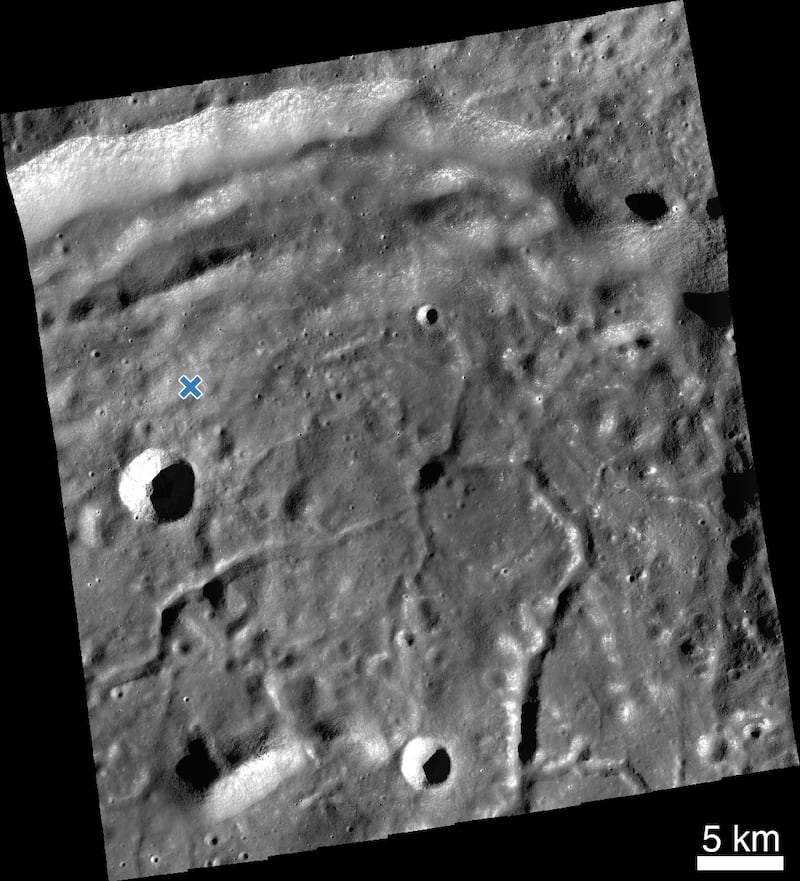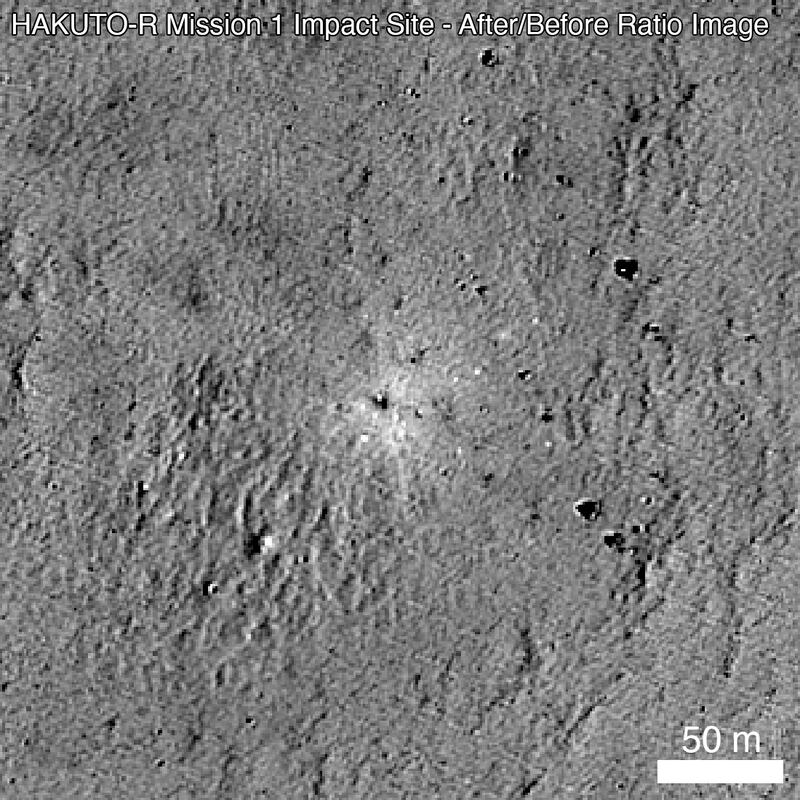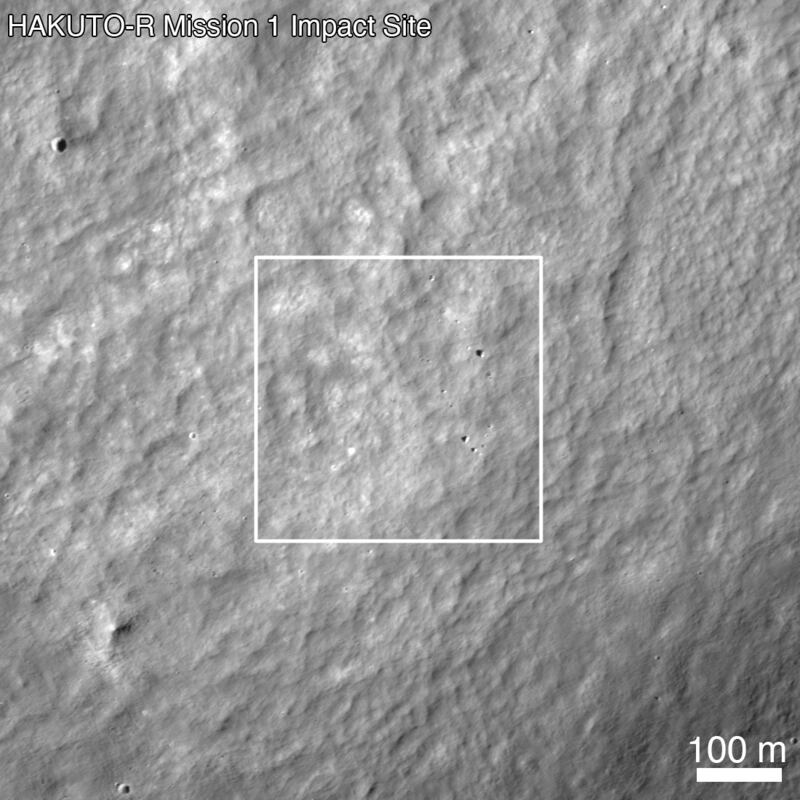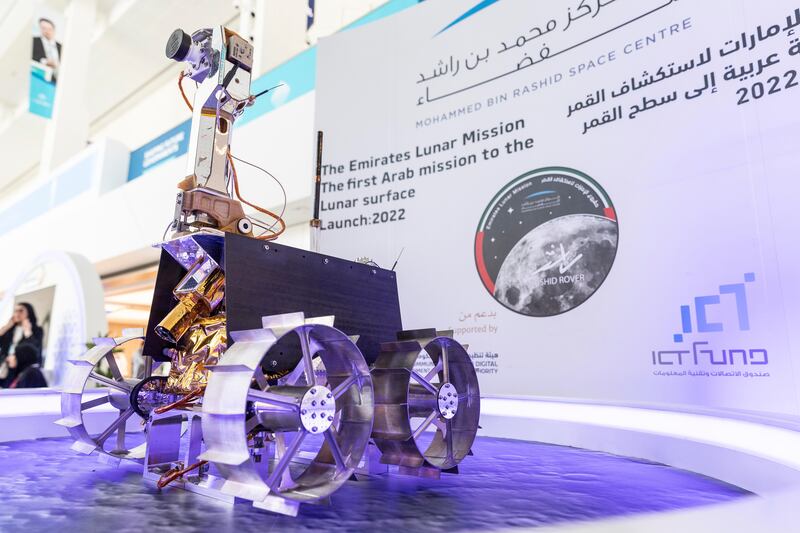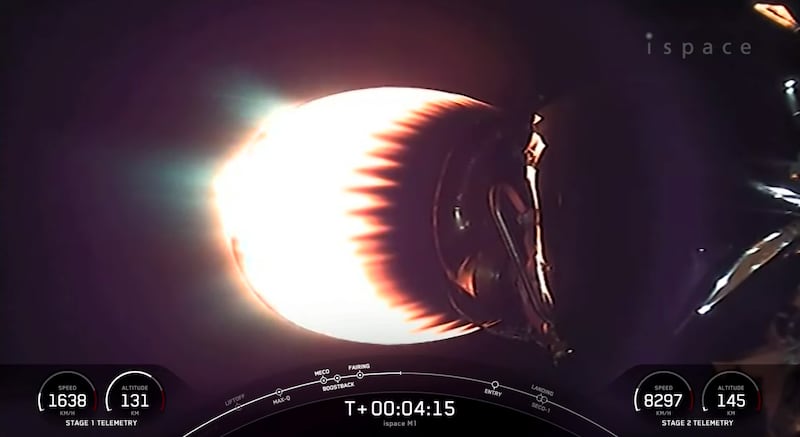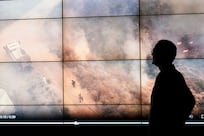A Nasa spacecraft has captured images of the site on the Moon where the lander carrying the UAE's Rashid rover crash-landed last month, including photos that show large pieces of debris scattered across the surface.
The Lunar Reconnaissance Orbiter took 10 images around the landing site, where a private lander that was carrying the rover failed in its attempted soft landing on April 26.
Mission control lost contact with the Hakuto-R lander, built by Japan's ispace inc, moments before touchdown was meant to take place.
Nasa said it had used narrow angle cameras to take the photographs and had identified an unusual surface change near the landing site.
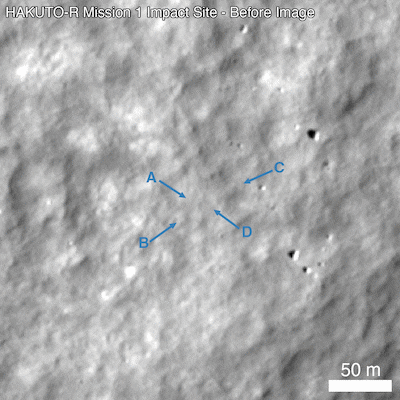
One of the images shows four large pieces of debris and several small changes to the lunar surface.
The orbiter identified another change on the lunar surface, which could be a small crater or different parts of the lander body.
If no craters were formed from the crash, it could mean that the landing was not as hard as thought, and it was closer to a soft touchdown.
“This site will be analysed more over the coming months, as LROC has the opportunity to reimage the site under various lighting and viewing geometries,” Nasa said.
Ispace will hold a media briefing on Friday to reveal details about why the mission failed.
But in an initial investigation after the crash landing, the company had said the remaining propellent in the spacecraft decreased during the landing attempt and shortly afterwards the descent speed rapidly increased.
This could suggest that the spacecraft ran out of fuel during the attempted touchdown, causing the engines to shut down and the lander to crash on the Moon's surface.
“After that, the communication loss happened. Based on this, it has been determined that there is a high probability that the lander eventually made a hard landing on the Moon’s surface,” ispace said at the time.
The Rashid rover was meant to spend 14 Earth days on the lunar surface, capturing thousands of images and studying its geology.
It was the first mission under the country's long-term Moon exploration programme. Emirati engineers at the Mohammed bin Rashid Space Centre spent nearly five years building the rover.
There was heartbreak at the space centre's mission control when ispace lost contact with the lander, but the engineers are already working on a second rover, called Rashid 2.
